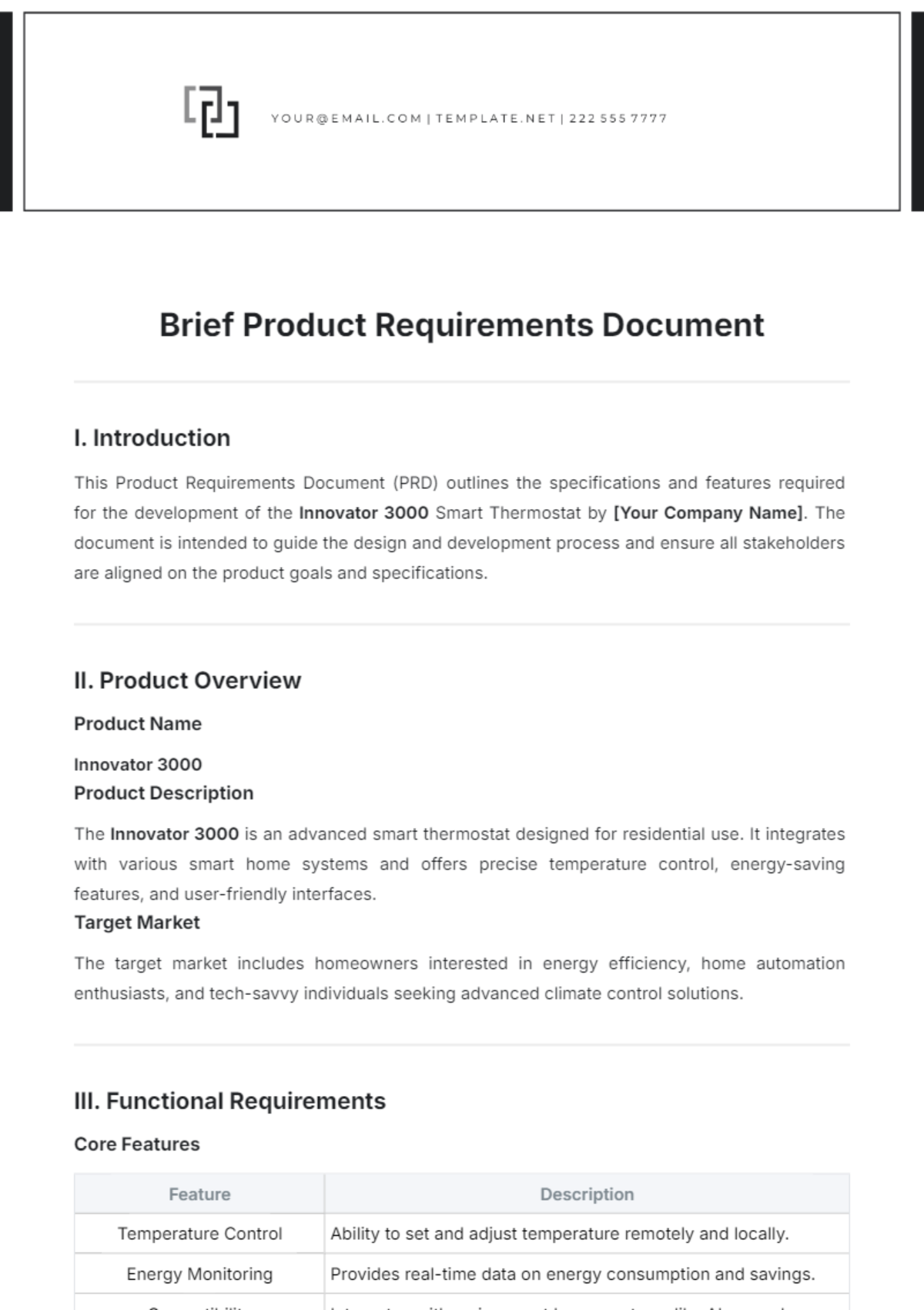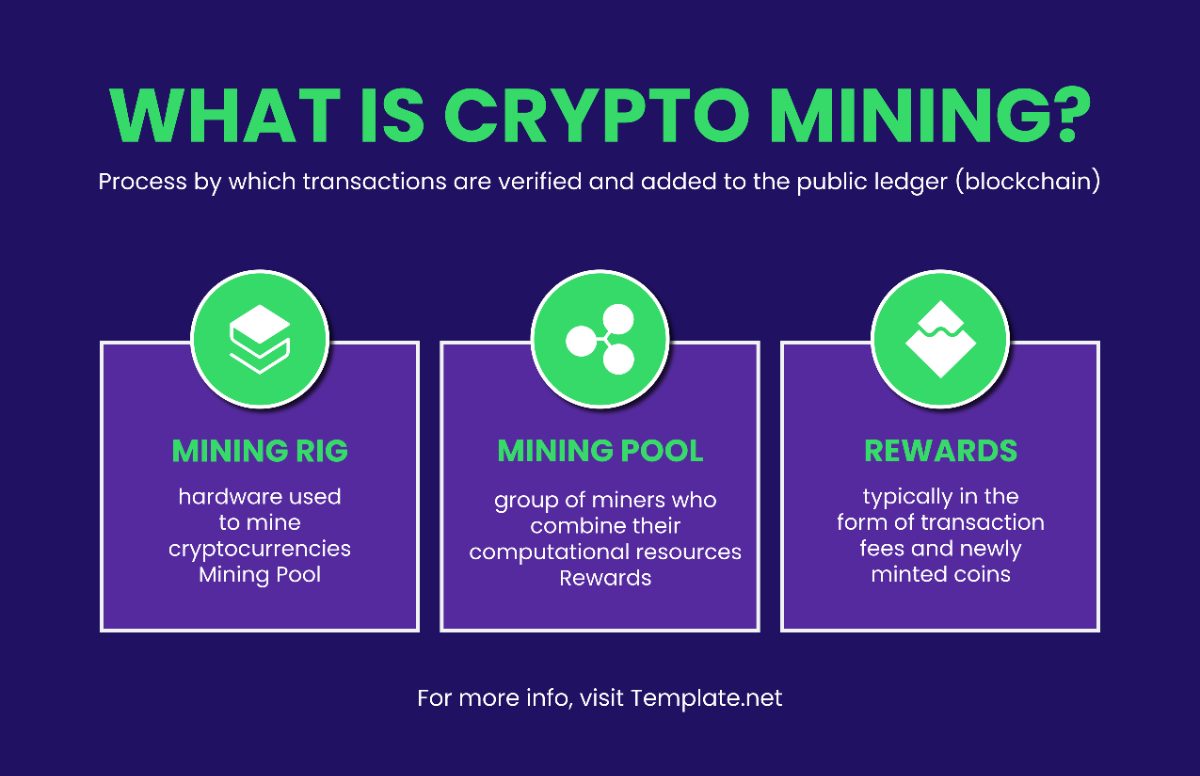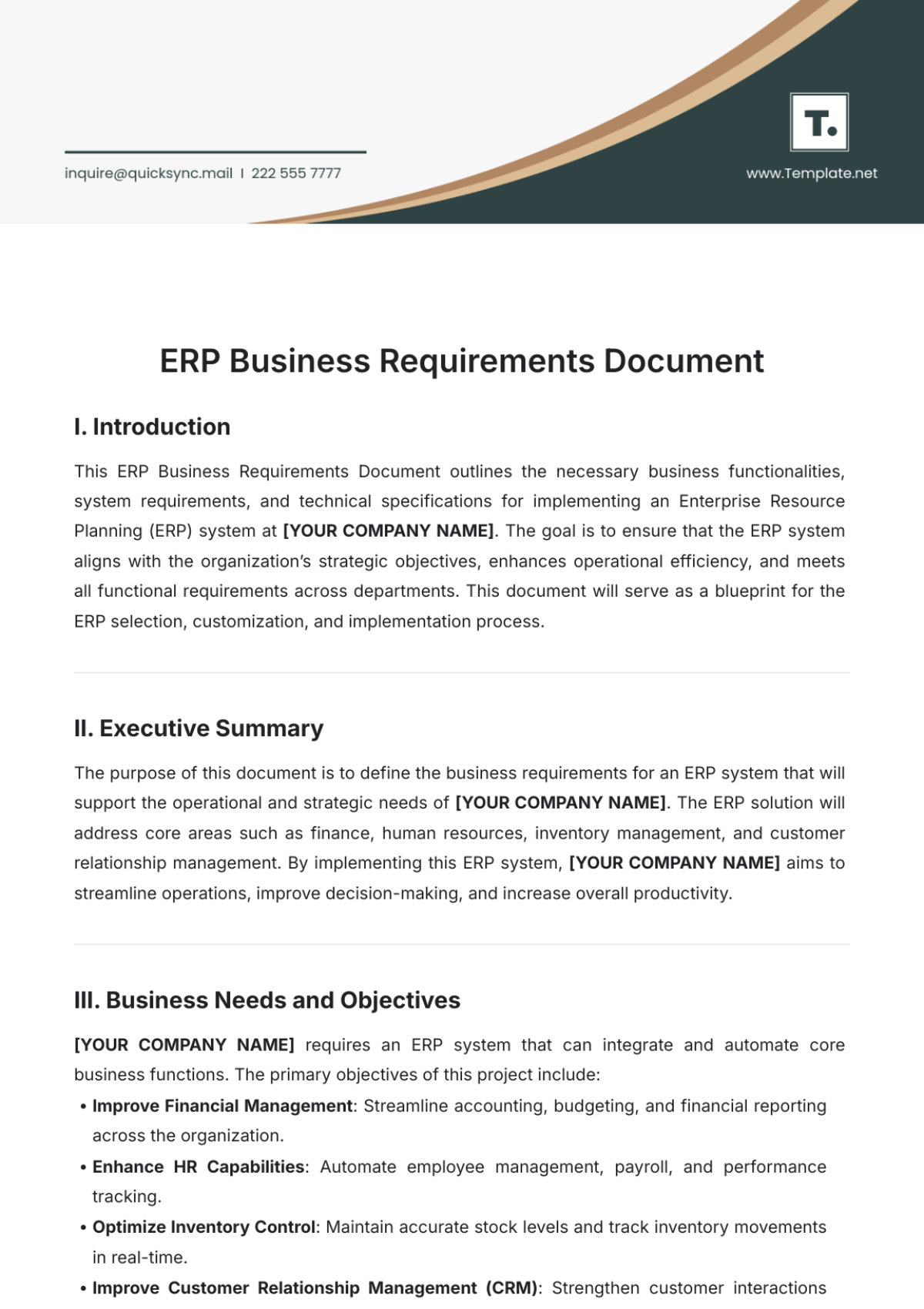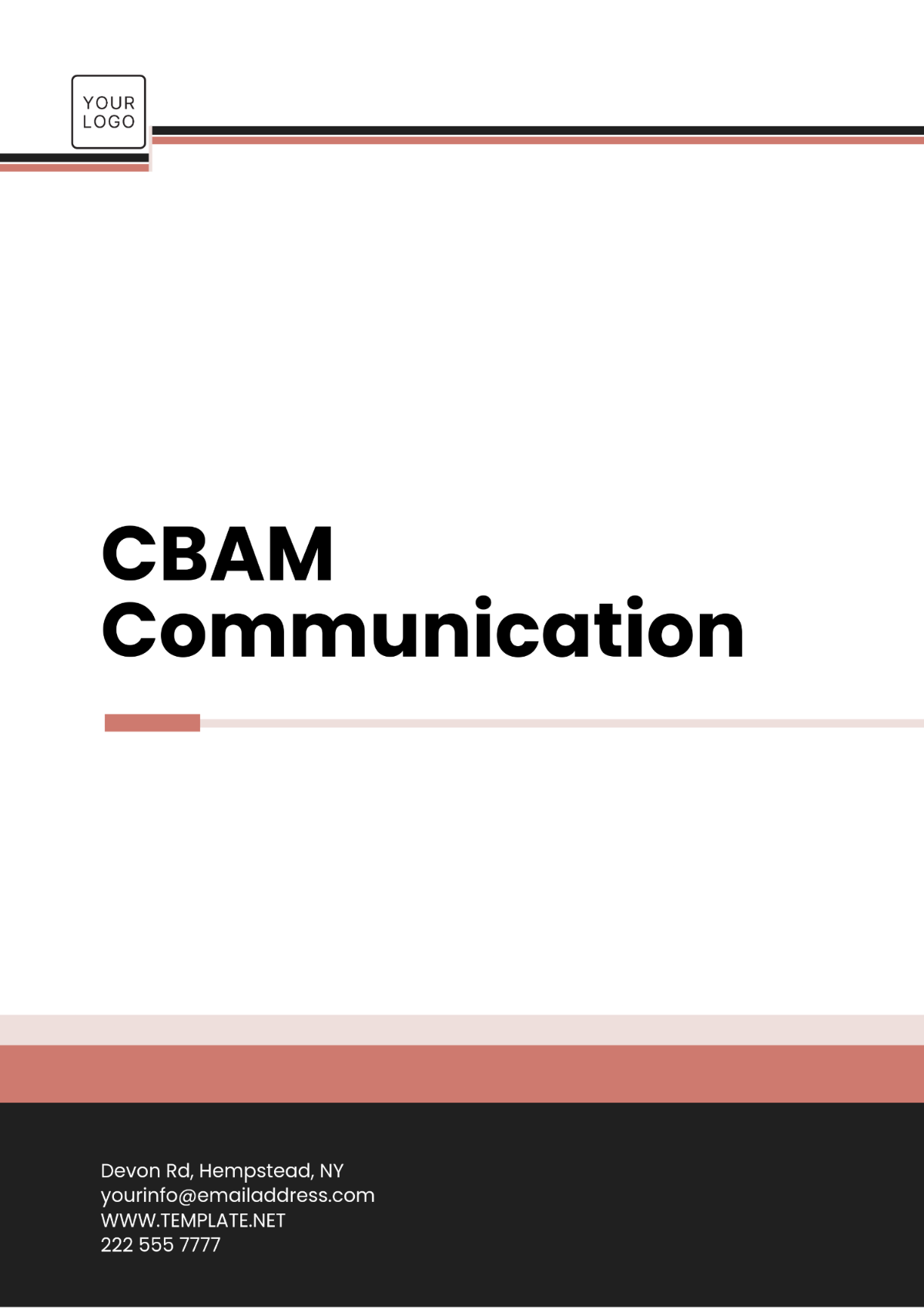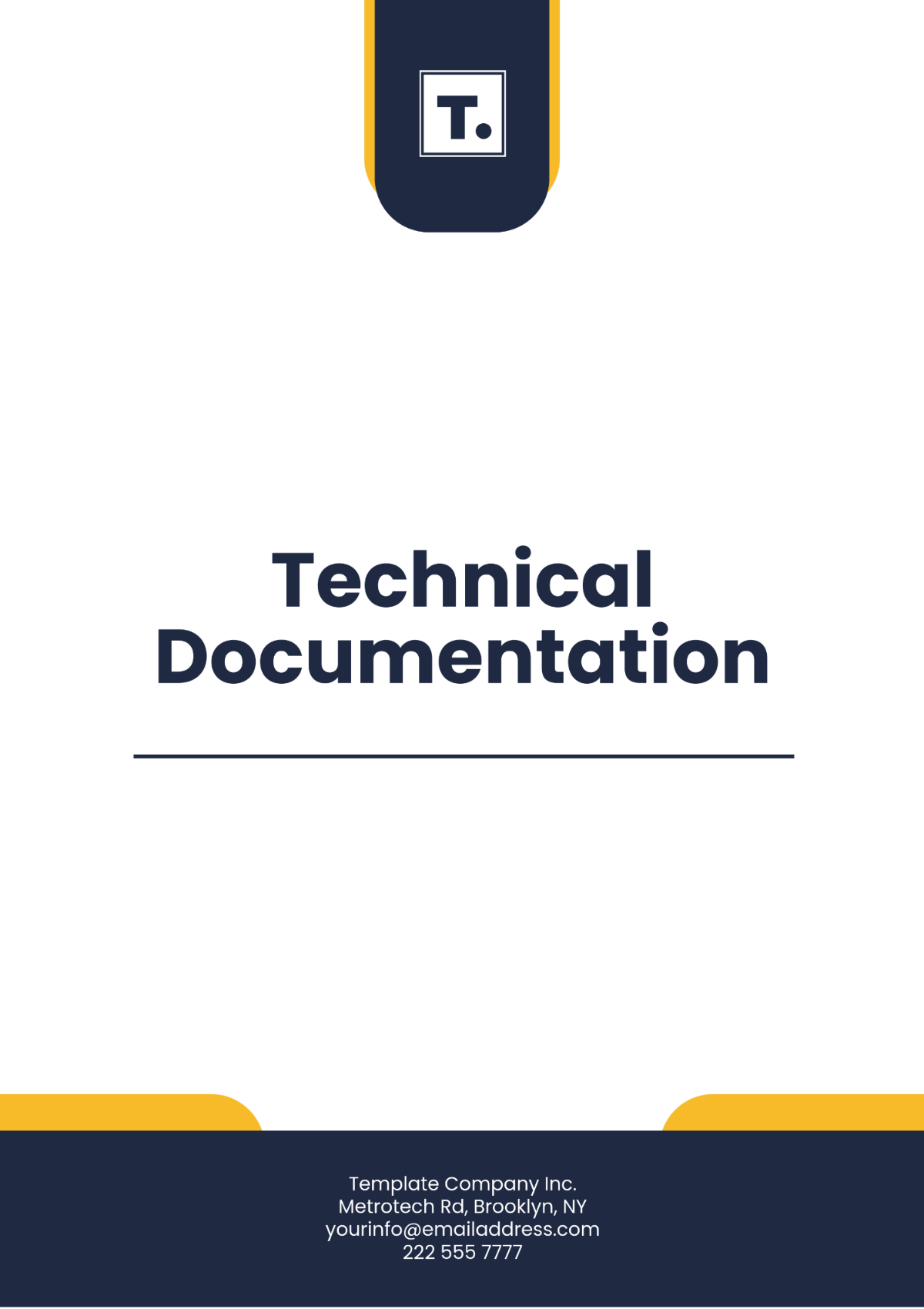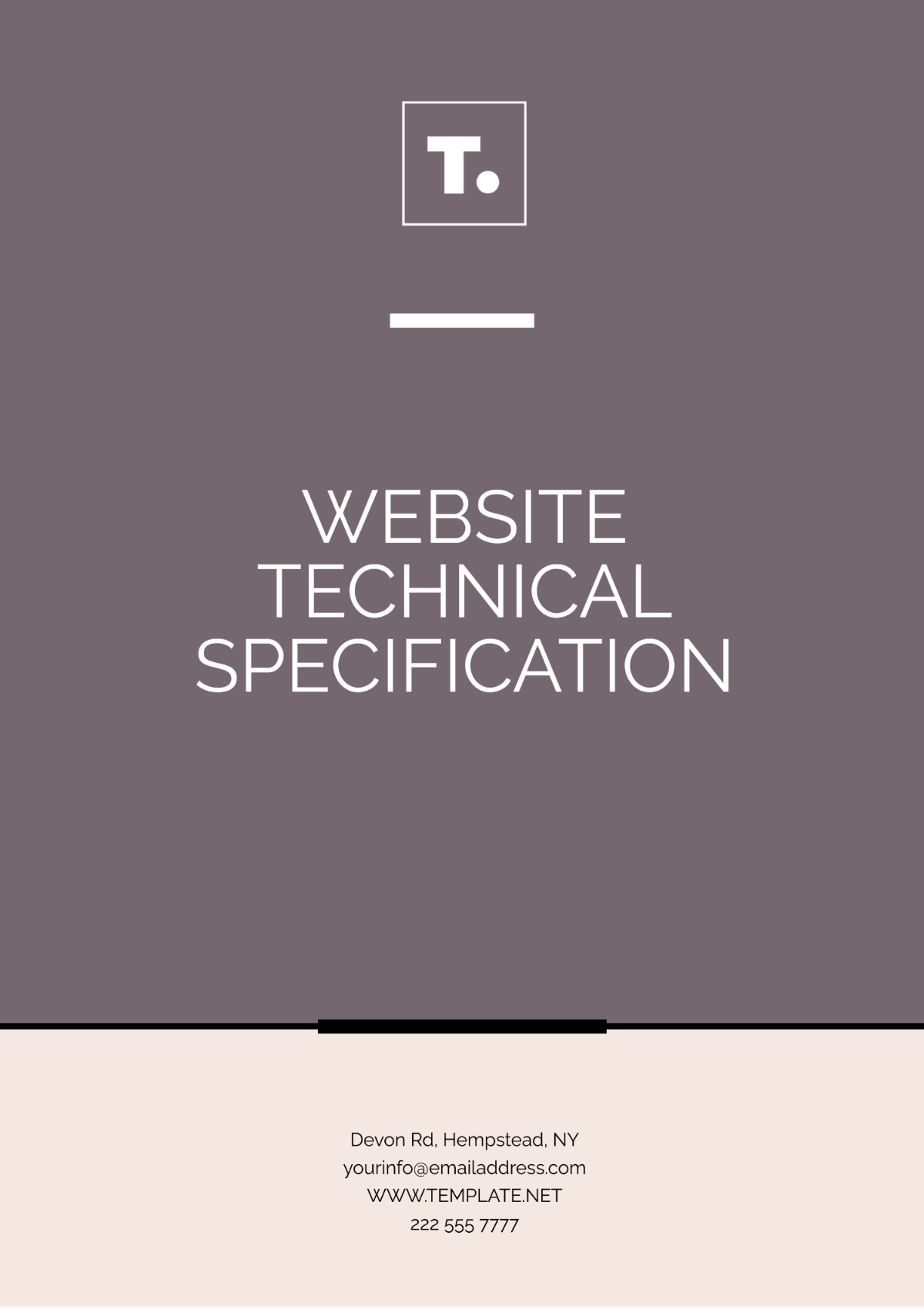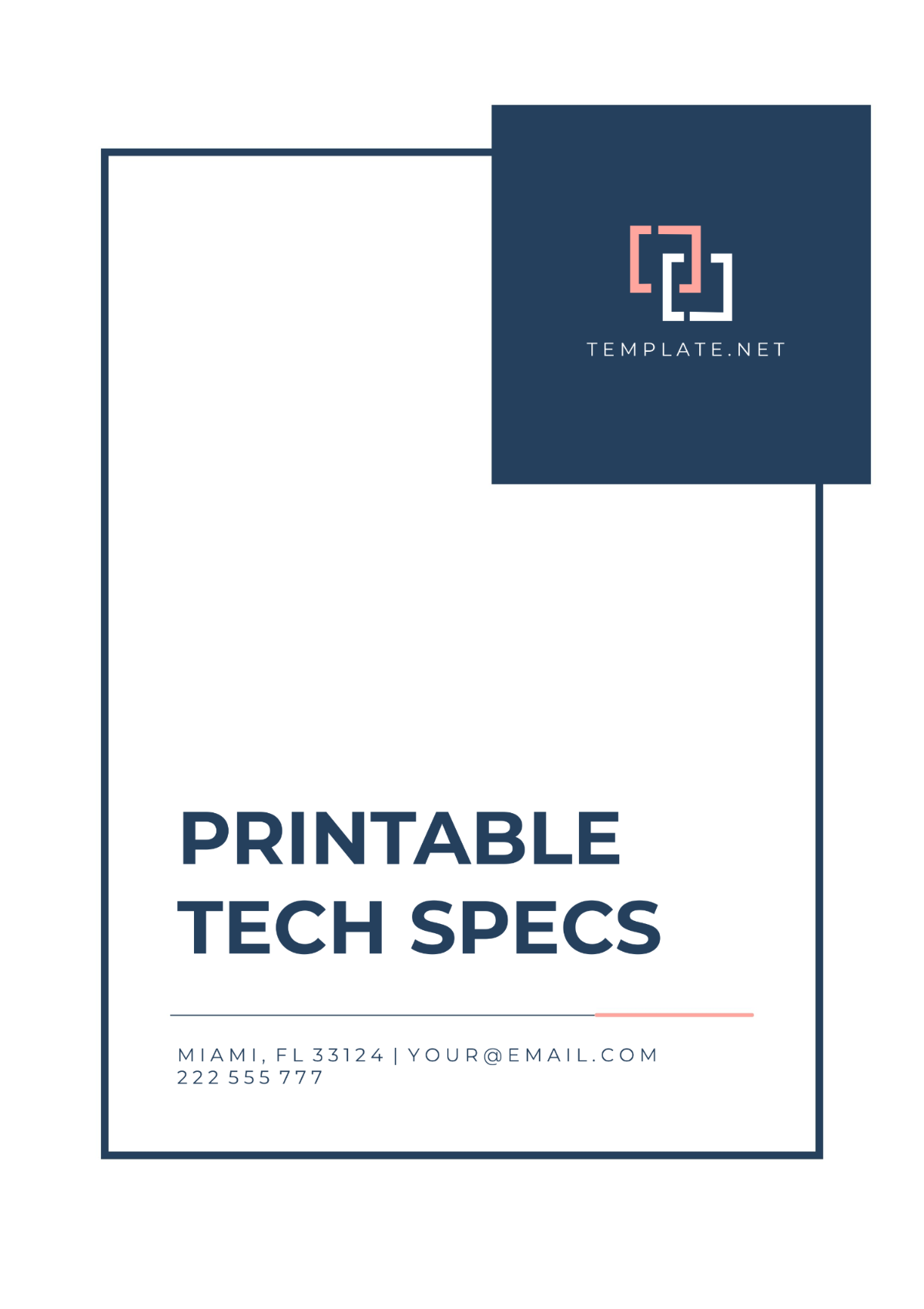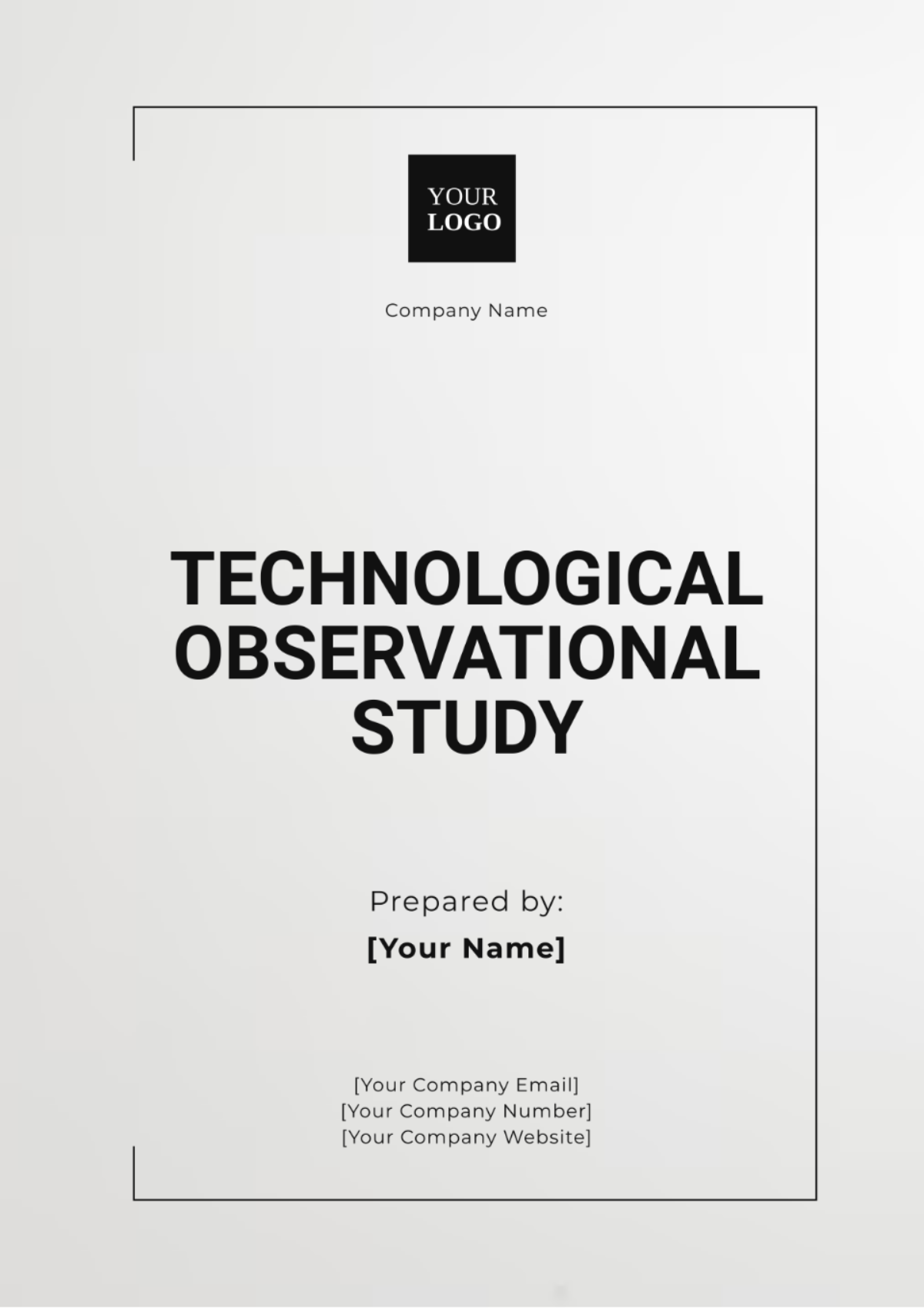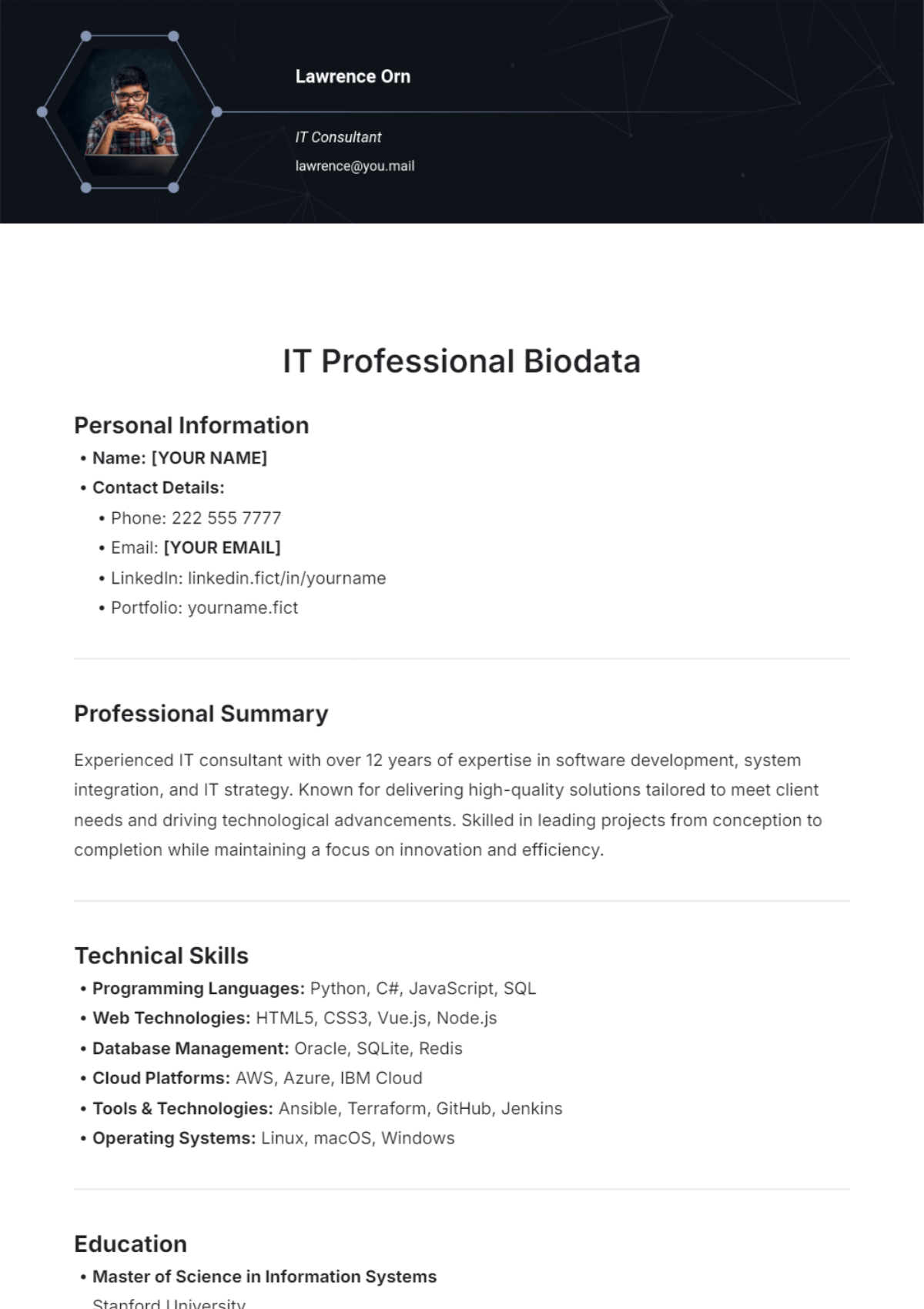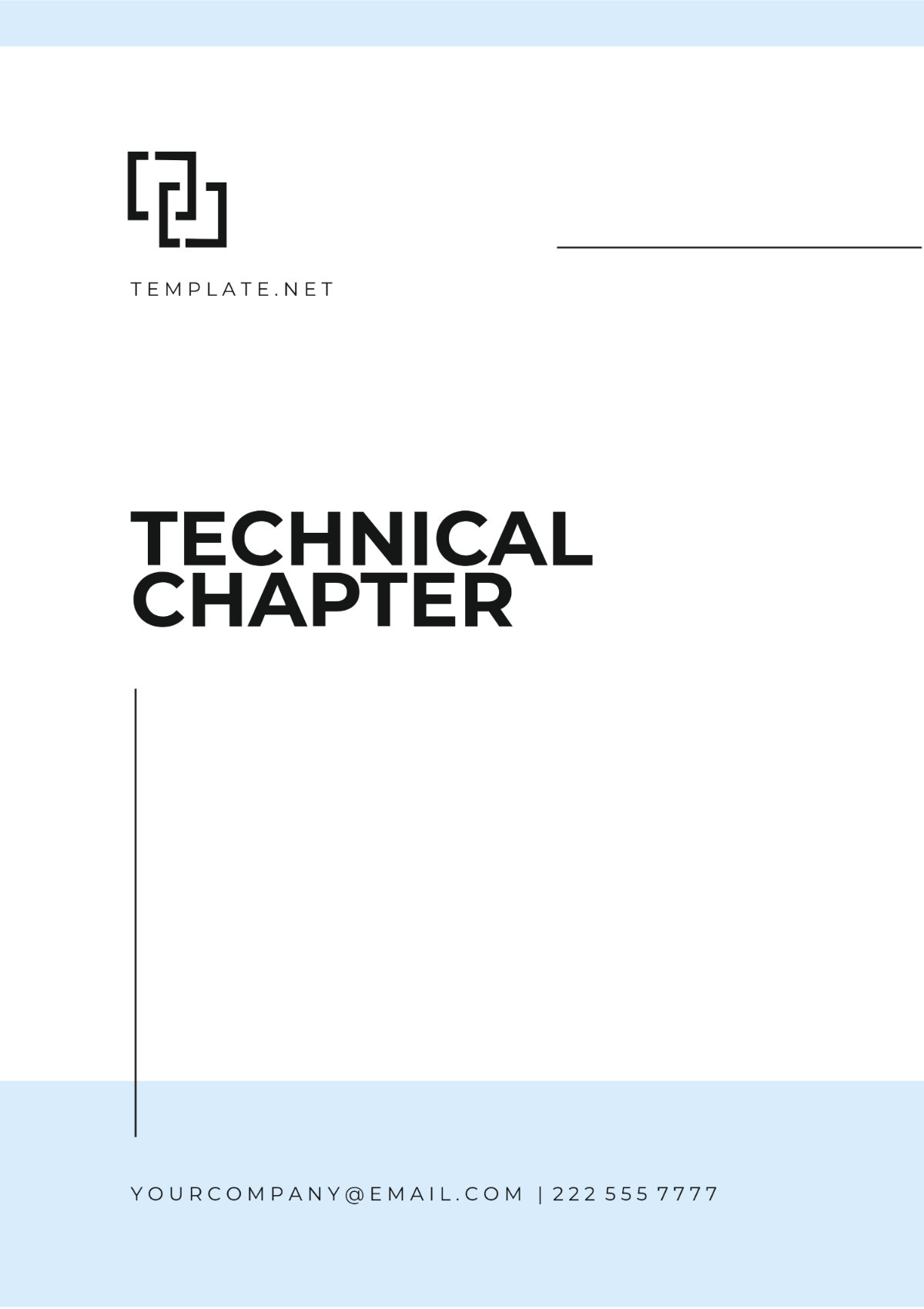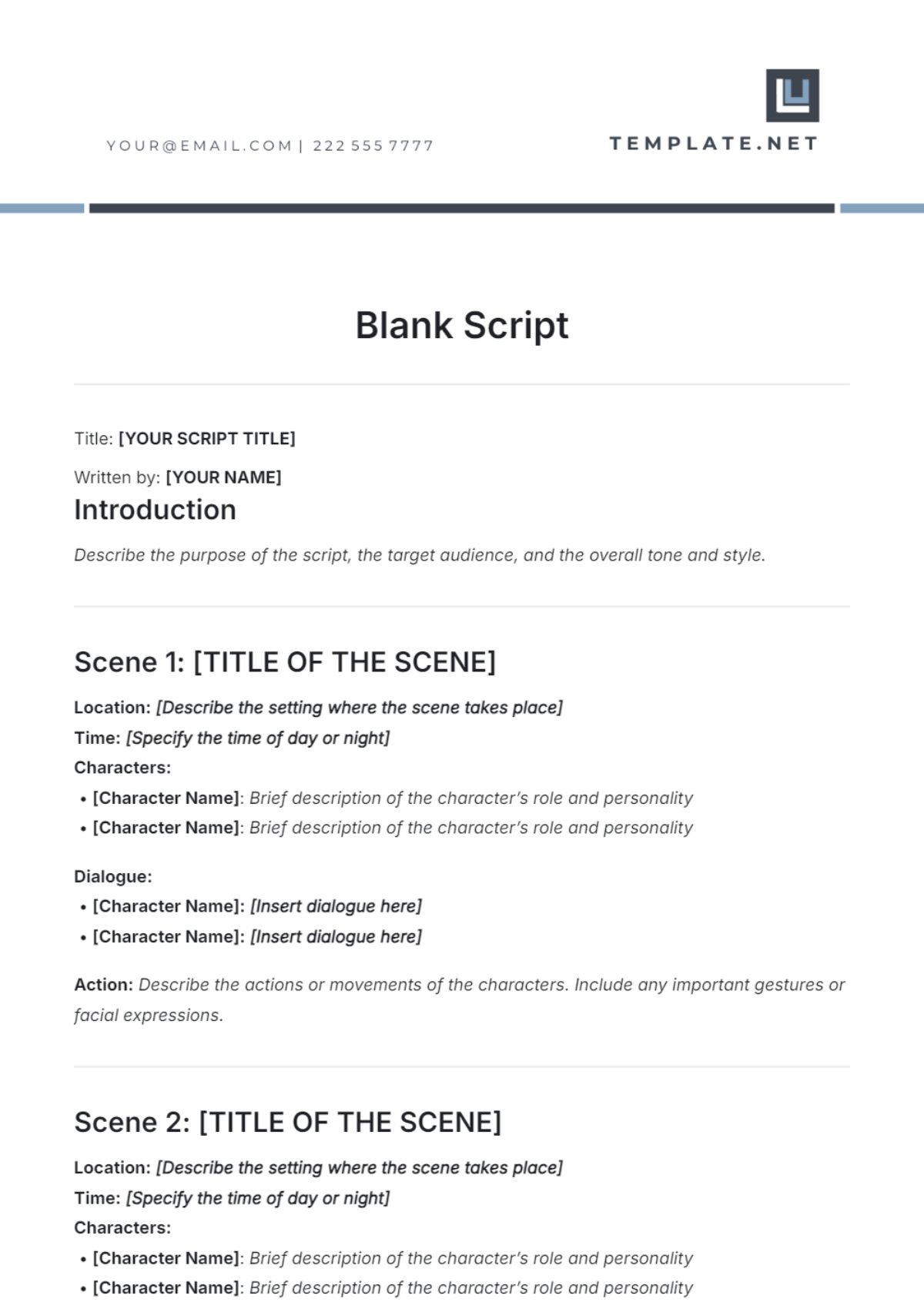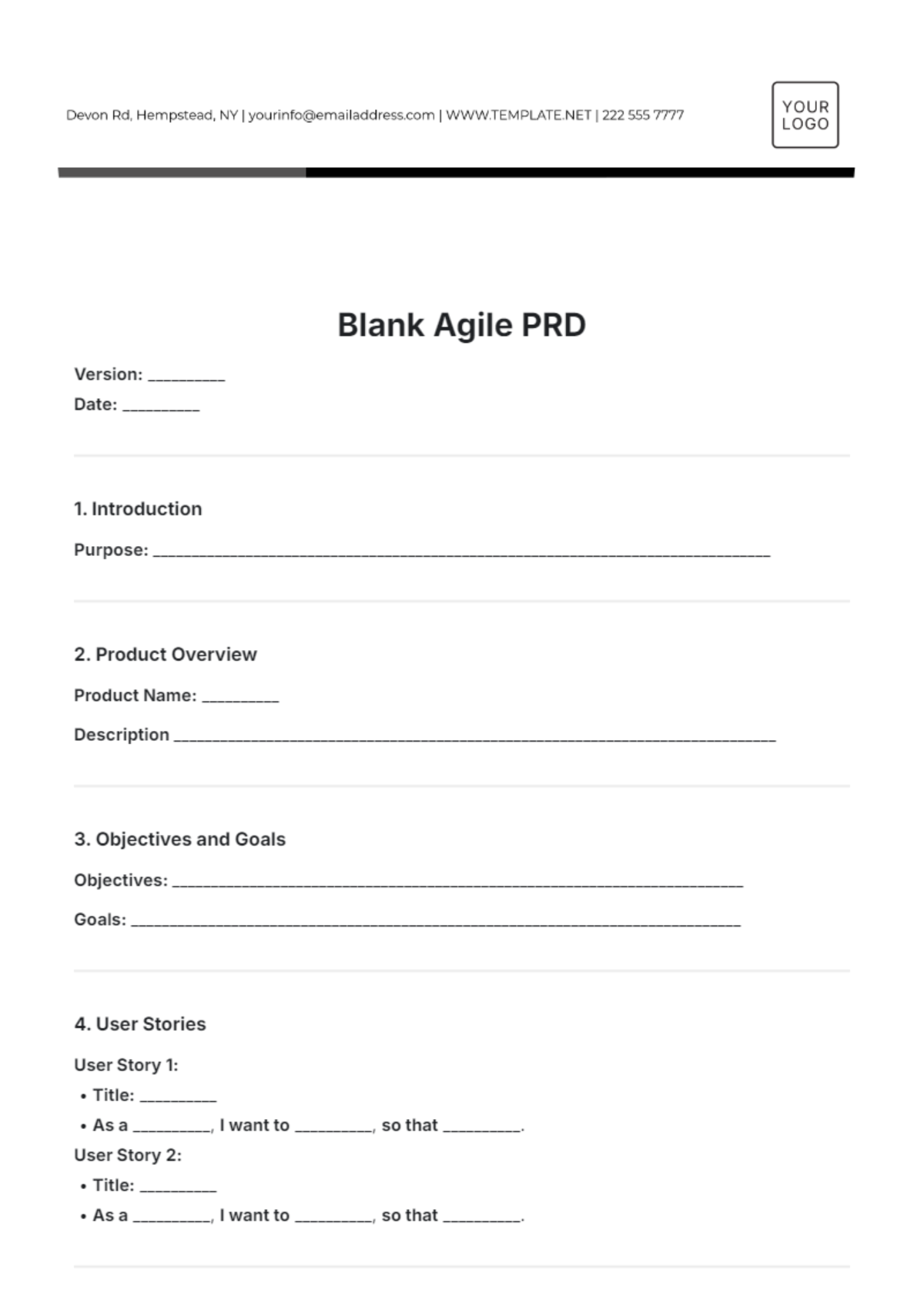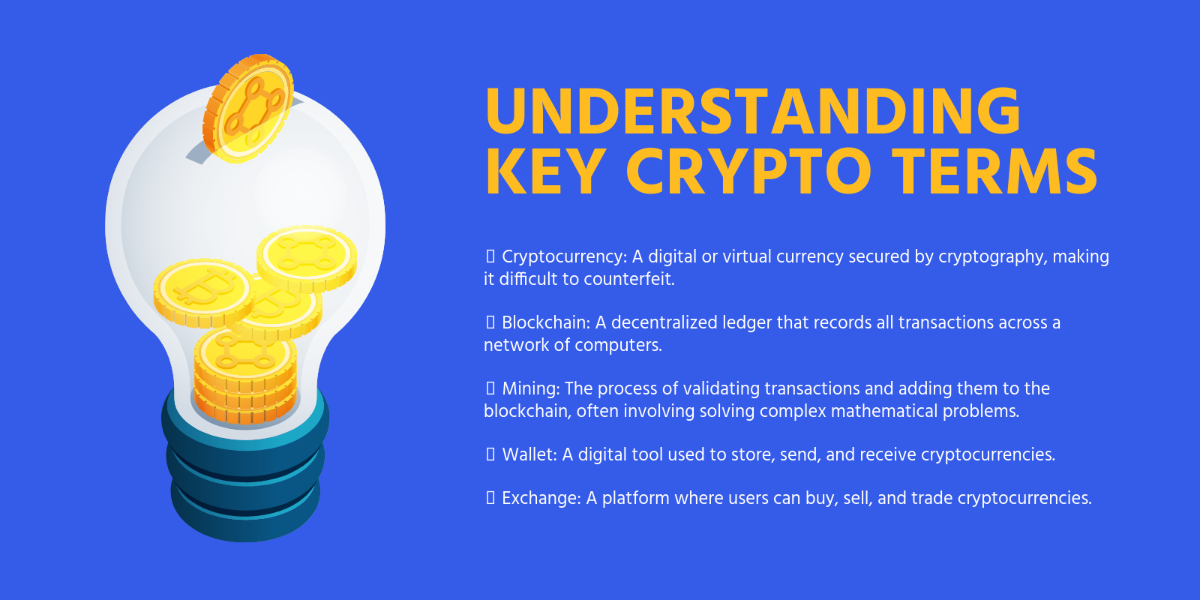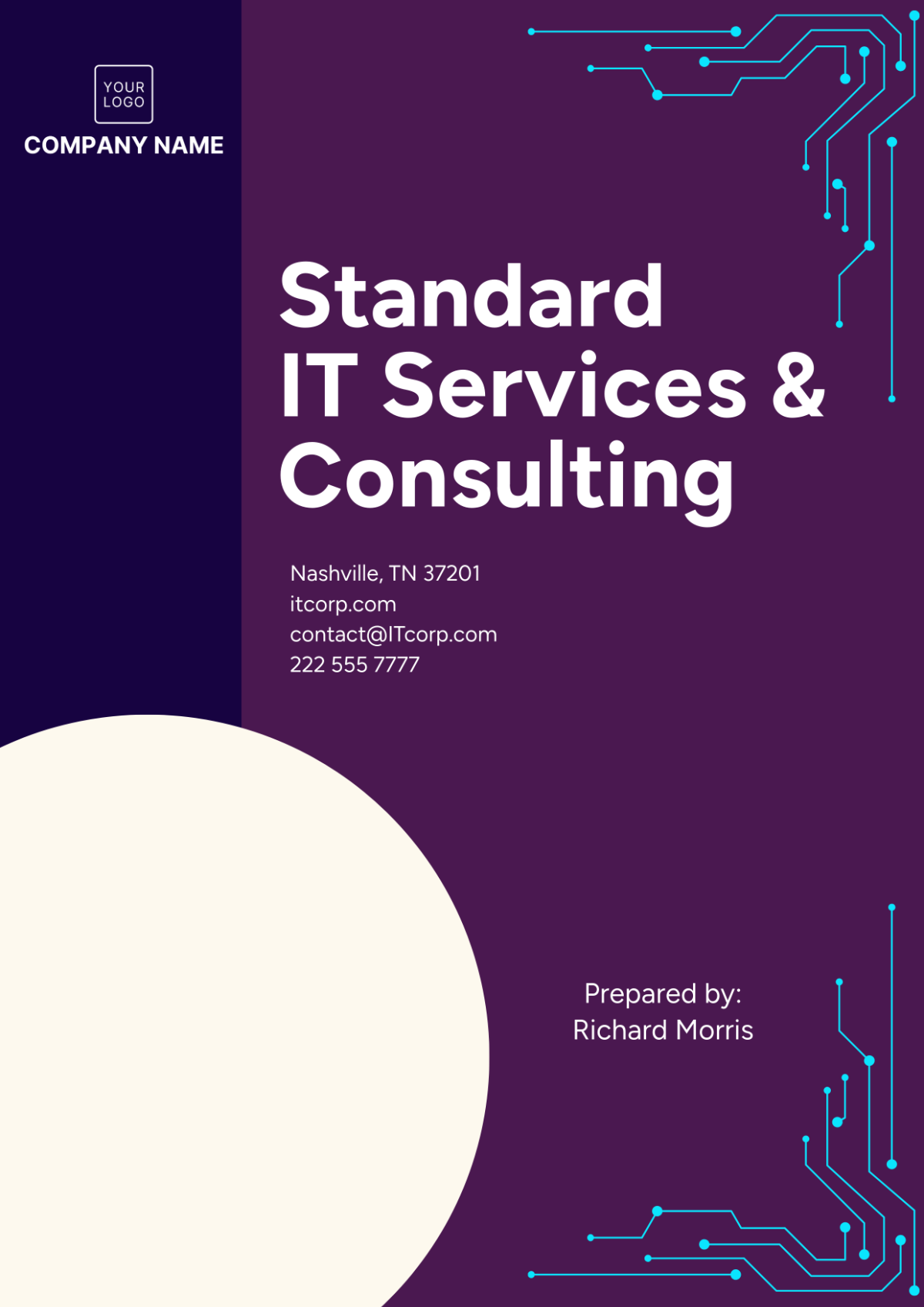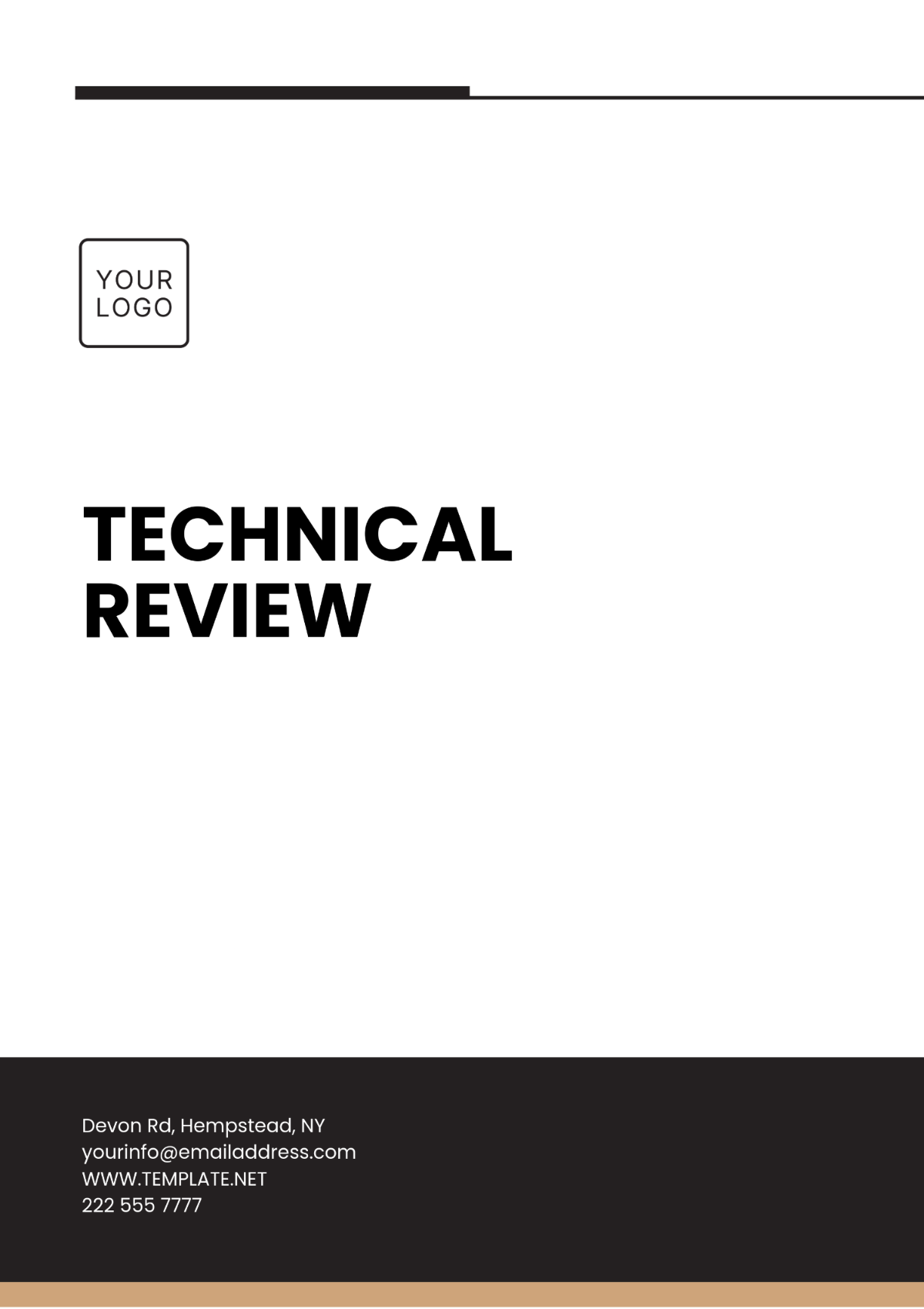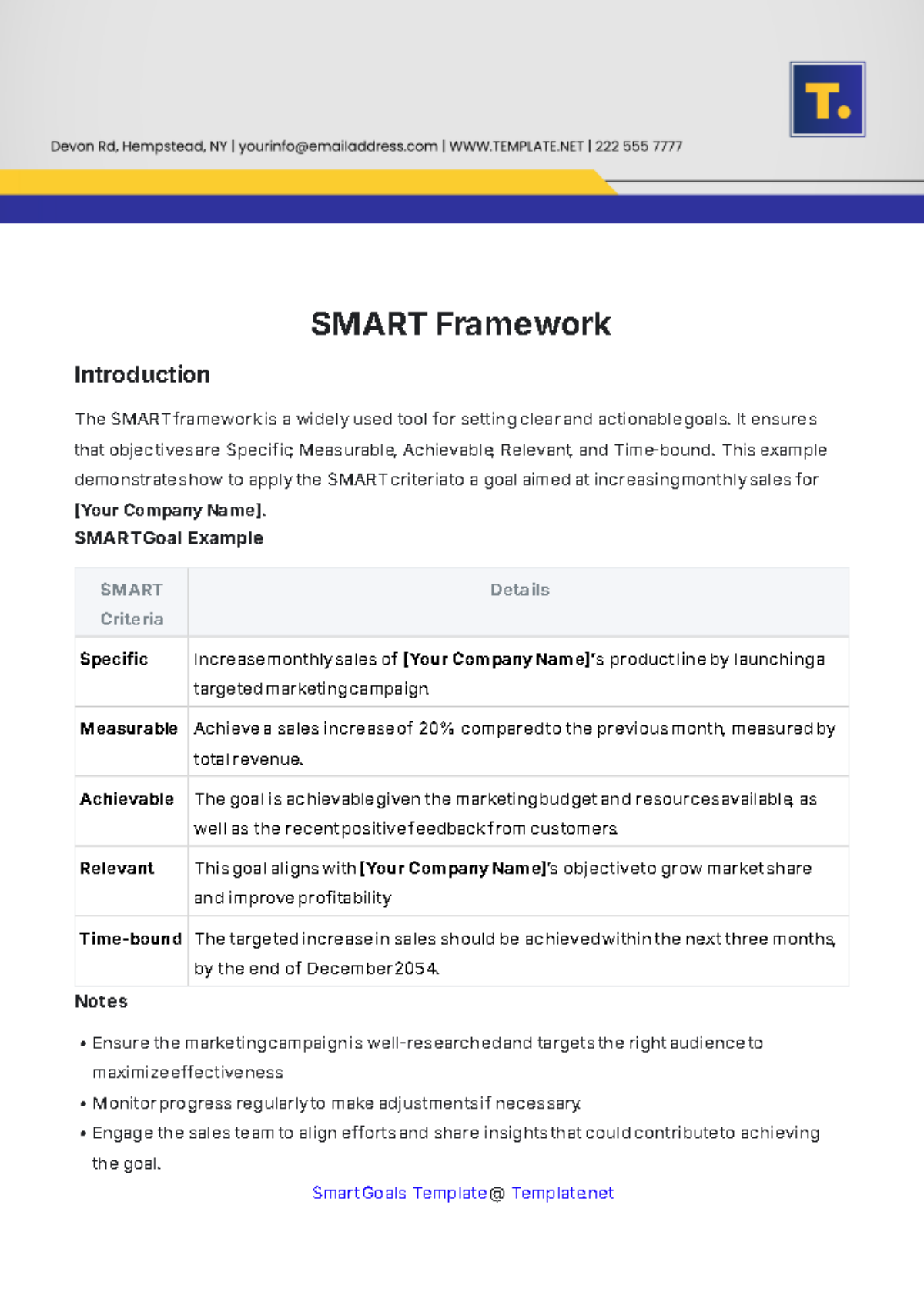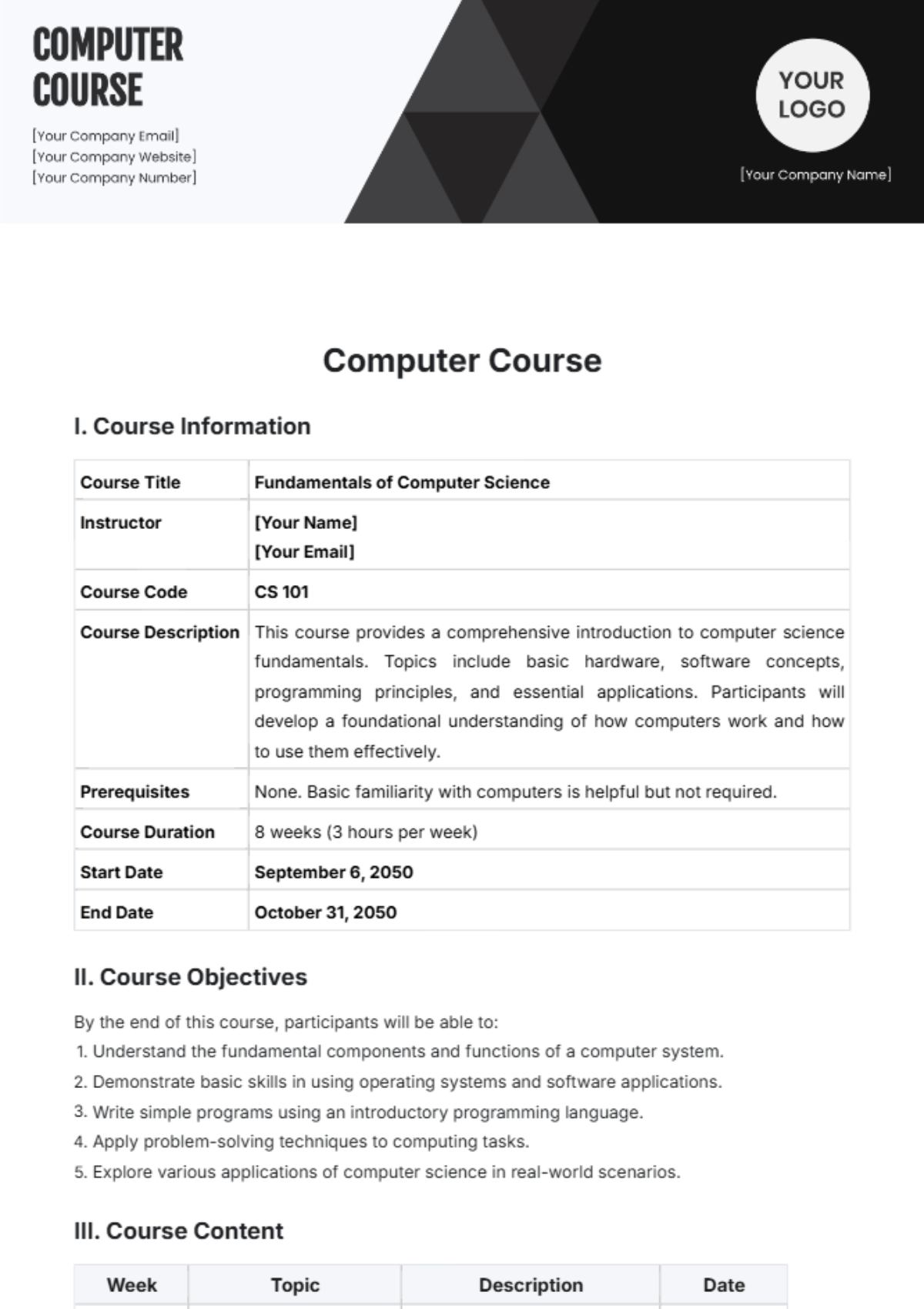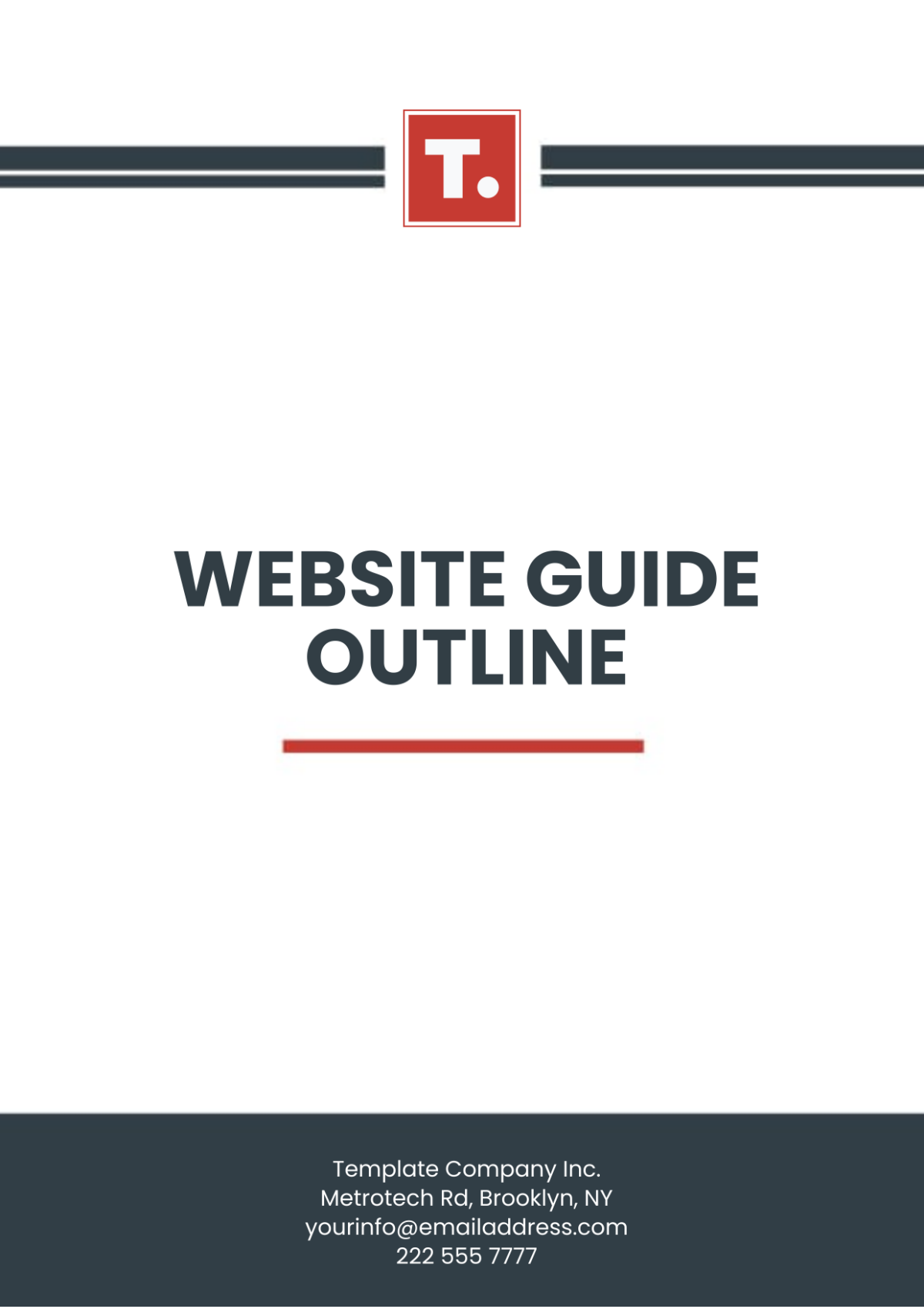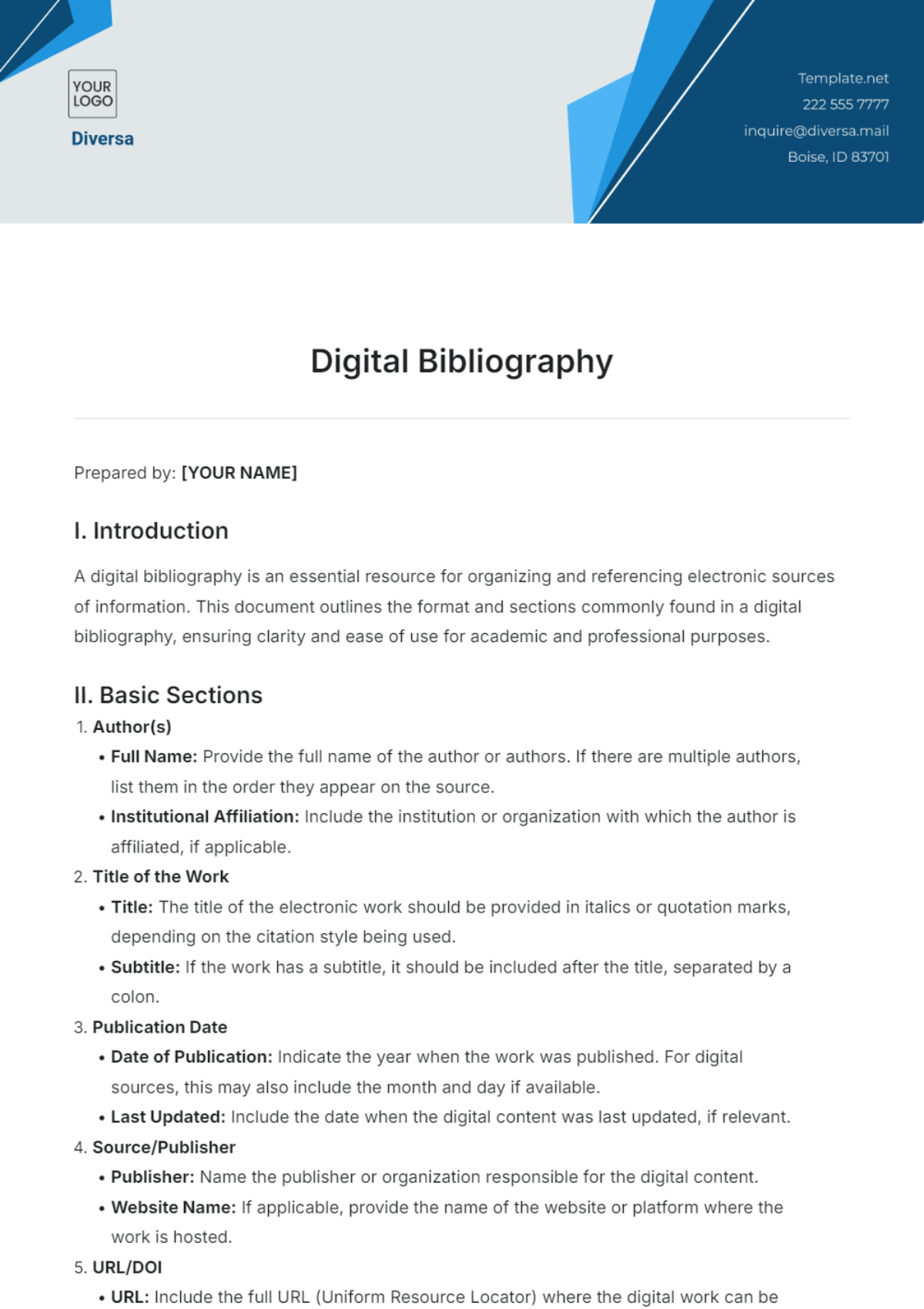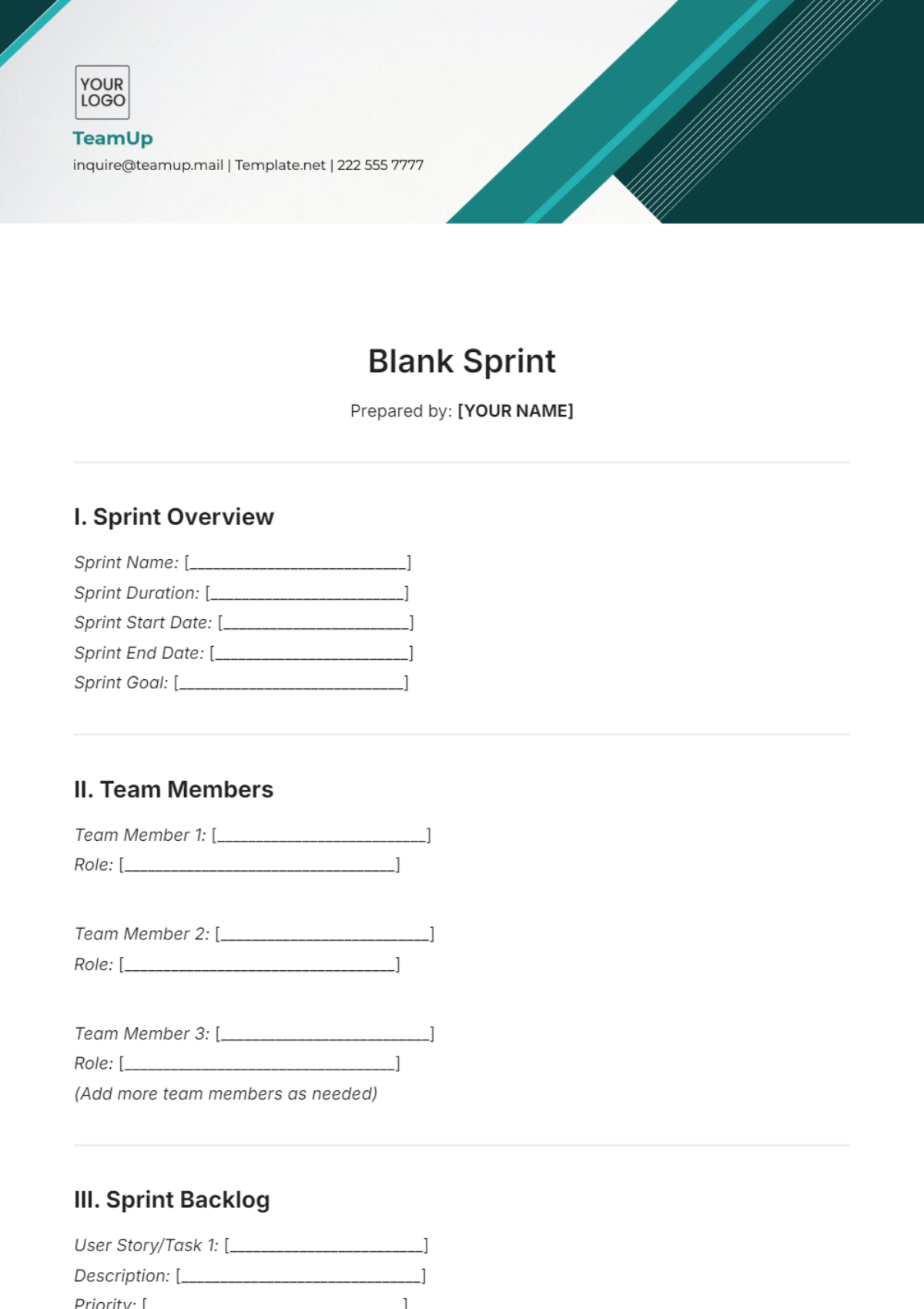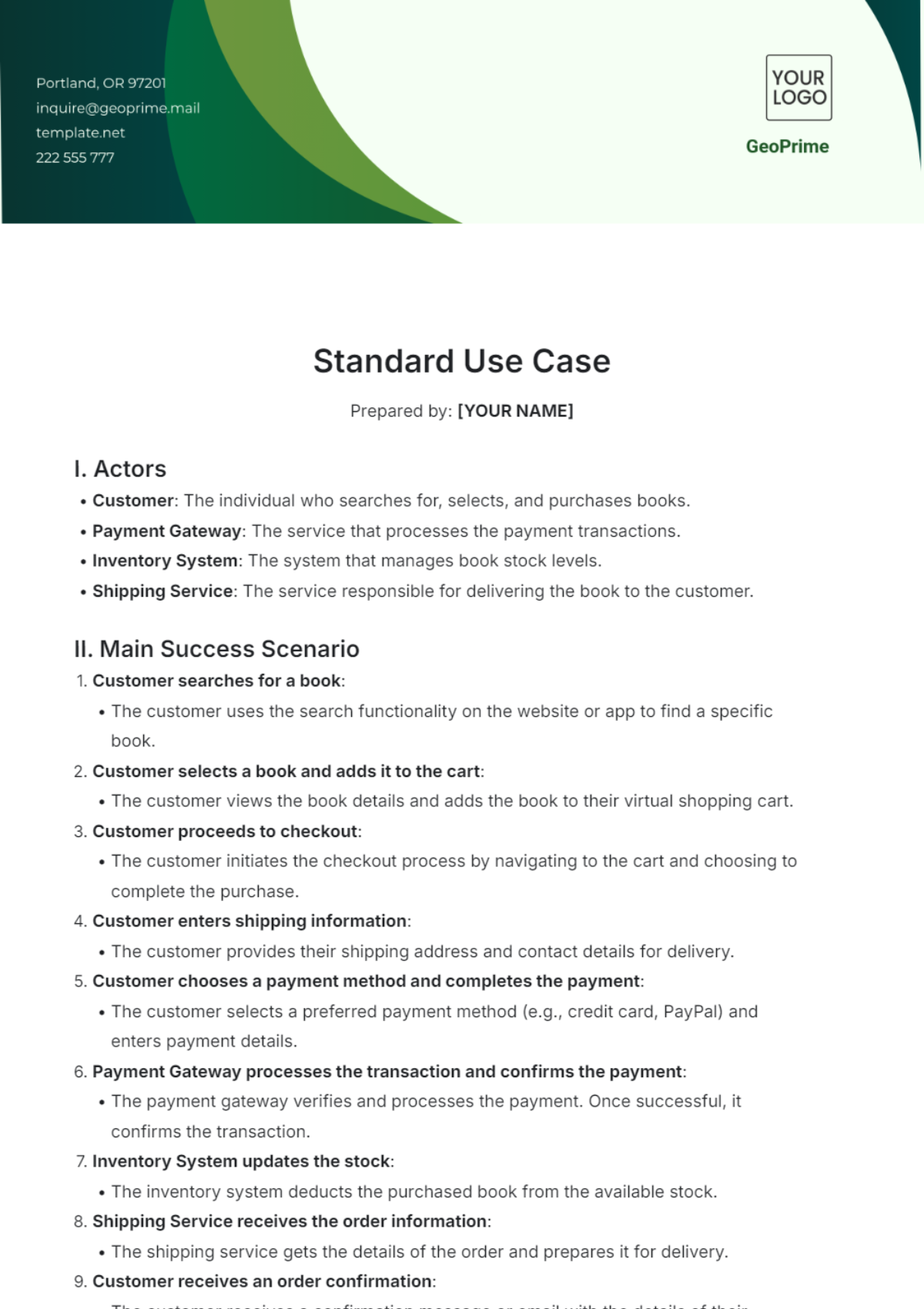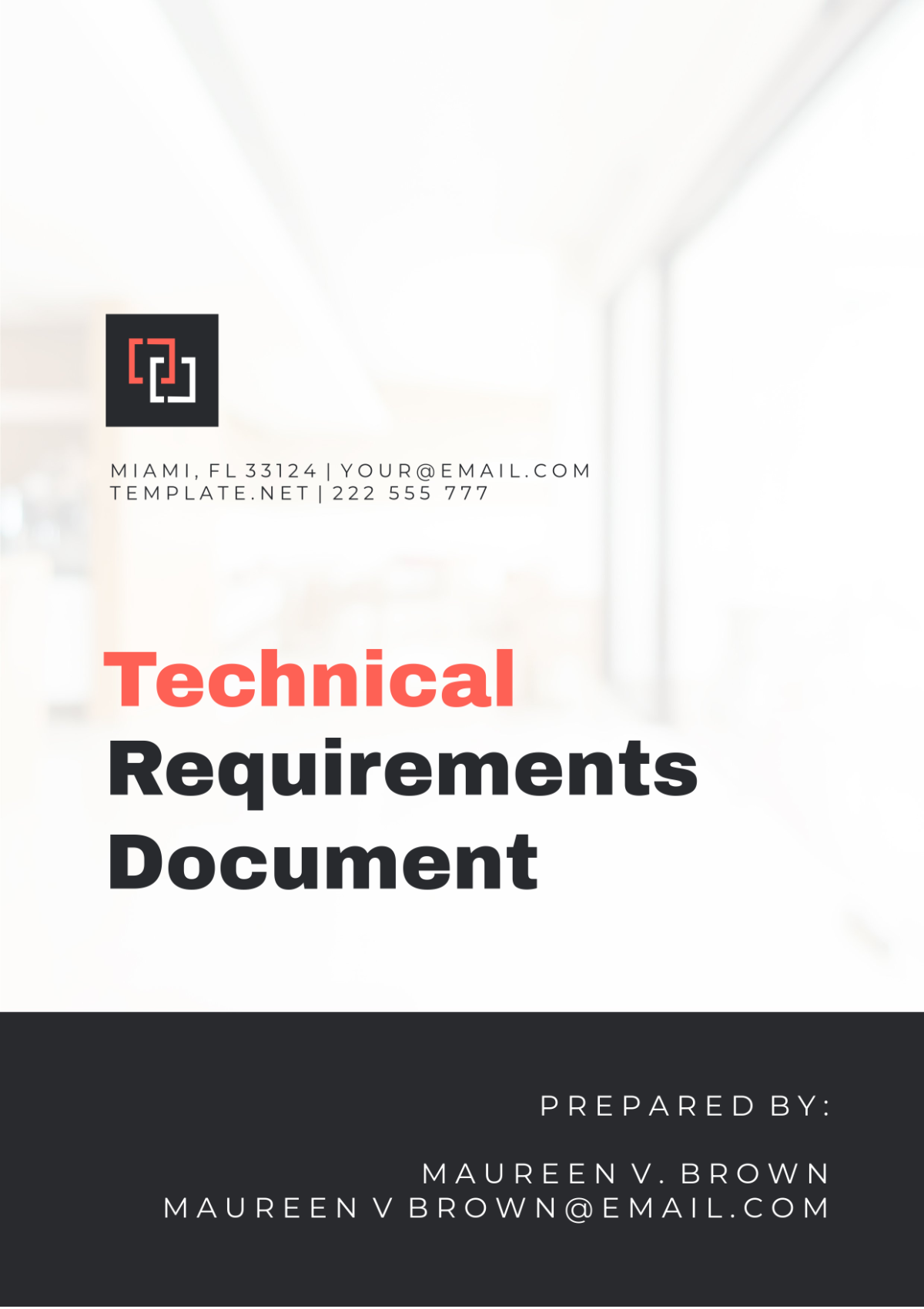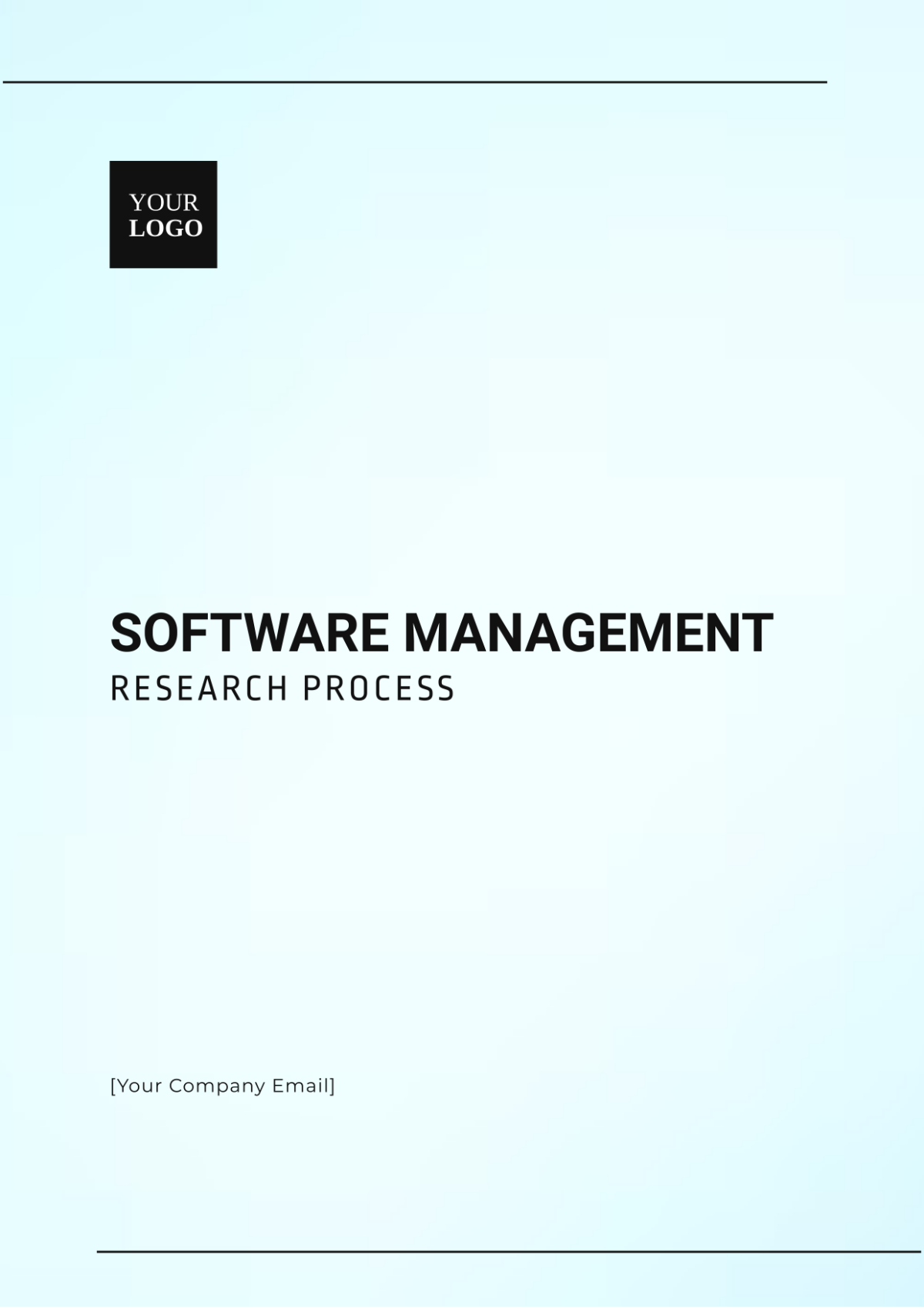Website Technical Specification
This document outlines the technical specifications required for the development and deployment of the [YOUR COMPANY NAME] website. It covers all critical aspects to ensure the website meets performance, security, and usability standards.
1. Overview
The [YOUR COMPANY NAME] website is intended to be a responsive, user-friendly platform aimed at delivering an excellent user experience across multiple devices. The website will support the company’s branding, offer essential information, and include interactive features to engage users. The website will be developed using modern web technologies and must be scalable for future growth.
2. Objectives
To provide a seamless user experience across various devices including desktops, tablets, and mobile phones.
To ensure quick loading times and optimal performance even under heavy traffic conditions.
To maintain high-security standards to protect user data and prevent vulnerabilities.
To include an easy-to-use content management system (CMS) that allows non-technical staff to update the website as needed.
To meet SEO best practices for improved search engine visibility and ranking.
3. Website Structure
3.1 Information Architecture
Homepage: Central hub containing navigation to key sections, a summary of services, and calls to action.
About Us: Company overview, mission statement, team members, and history.
Services/Products: Detailed descriptions of services/products offered.
Contact: Contact form, company address, email, and social media links.
Blog/News: Regular updates and articles.
FAQ: Frequently asked questions section.
Terms and Privacy Policy: Legal disclaimers and data protection information.
4. Technology Stack
4.1 Frontend Technologies
HTML5, CSS3, JavaScript (ES6) for website structure, style, and interactivity.
React.js or Vue.js for handling complex front-end interactions and improving user experience.
Tailwind CSS or Bootstrap for responsive design and faster CSS styling.
Web Accessibility Standards (WCAG 2.1) to ensure the website is accessible to users with disabilities.
4.2 Backend Technologies
Node.js with Express or PHP (Laravel) as the server-side framework for handling requests and managing backend logic.
MySQL or PostgreSQL for a scalable and relational database system.
API Integration (RESTful or GraphQL) to connect with external services like payment gateways or third-party APIs.
5. Performance Requirements
5.1 Loading Speed
Page Load Time: Website pages must load within 3 seconds on a standard broadband connection (50 Mbps or higher).
Lazy Loading: Images and videos should use lazy loading to enhance performance.
Caching: Implement browser-side caching to reduce server load and improve load times for repeat visitors.
5.2 Mobile Responsiveness
Responsive Design: The website must adjust seamlessly across various screen sizes and orientations.
Mobile Optimization: Prioritize fast loading on mobile devices, with reduced use of heavy scripts and optimized media files.
6. Security
6.1 SSL Certification
SSL (Secure Sockets Layer): Ensure all web pages are served over HTTPS using an SSL certificate to encrypt data transmission.
6.2 User Authentication and Roles
Admin Area: Protected with two-factor authentication (2FA) to limit unauthorized access.
Role-Based Access Control: Different levels of access for administrators, content editors, and users.
6.3 Data Protection
GDPR Compliance: Ensure user data is handled in accordance with GDPR regulations (if applicable).
Regular Security Audits: Conduct security audits and penetration testing on an annual basis to identify and fix vulnerabilities.
7. SEO and Analytics
7.1 On-Page SEO
Meta Tags: Proper use of title tags, meta descriptions, and keyword optimization.
Sitemap and Robots.txt: Include an XML sitemap and a well-structured robots.txt file for search engine indexing.
7.2 Off-Page SEO
Link Building Strategy: Implement a strategy to gain quality backlinks.
Social Sharing: Integration with social media platforms to enhance shareability of content.
7.3 Analytics and Tracking
Google Analytics 4 (GA4): To track visitor behaviors, bounce rates, and conversion rates.
Search Console Integration: For monitoring website performance on Google search.
8. CMS (Content Management System)
8.1 CMS Selection
WordPress or Custom CMS: Based on requirements, a flexible CMS platform will be chosen.
User Roles and Permissions: Define roles for content creators, editors, and administrators.
WYSIWYG Editor: Ensure an easy-to-use "What You See Is What You Get" editor for content updates.
8.2 Plugins and Extensions
SEO Plugins: To assist with on-page SEO optimization.
Security Plugins: To protect against malware, brute force attacks, and unauthorized logins.
Backup Plugins: Automatic backups to prevent data loss.
9. Testing and Quality Assurance
9.1 Functional Testing
Browser Compatibility: Test across all major browsers (Chrome, Firefox, Safari, Edge) to ensure consistent functionality.
Device Testing: Ensure the website functions correctly on a wide range of devices (smartphones, tablets, laptops).
Form Validation: Test all user input forms to ensure proper validation and error handling.
9.2 Performance Testing
Load Testing: Simulate heavy traffic to ensure the website can handle high levels of concurrent users without crashing or slowing down.
Stress Testing: Push the website beyond its operational limits to identify breaking points.
9.3 Security Testing
Penetration Testing: Identify vulnerabilities by attempting to breach the website security protocols.
Vulnerability Scanning: Regular scanning to identify potential security holes and weak spots.
10. Maintenance and Support
10.1 Ongoing Maintenance
Regular Updates: Ensure all software components (CMS, plugins, etc.) are kept up-to-date to prevent security vulnerabilities.
Content Updates: Provide content updates and refreshes on a regular basis to keep the website current and relevant.
10.2 Support
Support Channels: Provide users with email and chat support for any website-related issues.
Service Level Agreement (SLA): Ensure that a service level agreement is in place to cover response and resolution times for critical issues.
11. Hosting and Deployment
11.1 Hosting Requirements
Cloud-Based Hosting: Preferable on platforms such as AWS or Google Cloud for scalability and reliability.
Uptime: Ensure 99.9% uptime guarantee with robust backup systems in place.
11.2 Deployment Strategy
CI/CD Pipeline: Use continuous integration/continuous deployment (CI/CD) tools such as Jenkins to automate deployment processes.
Staging Environment: Implement a staging environment to test new features and updates before pushing them live.
12. Compliance and Legal
12.1 Privacy Policy and Terms
Data Collection: Outline how data is collected, stored, and used in accordance with relevant privacy regulations.
Terms of Use: Clearly define terms of service for website users.
12.2 Legal Considerations
DMCA Compliance: Include provisions for removing copyrighted content in accordance with the Digital Millennium Copyright Act.
ADA Compliance: Ensure the website meets accessibility requirements under the Americans with Disabilities Act.
13. Conclusion
The [YOUR COMPANY NAME] website technical specification outlines the essential elements required for development. It serves as a guiding document to ensure that the website is built to meet the highest standards of performance, security, and usability. The project team will use this document to ensure that all aspects are completed within the expected timeline and specifications.
